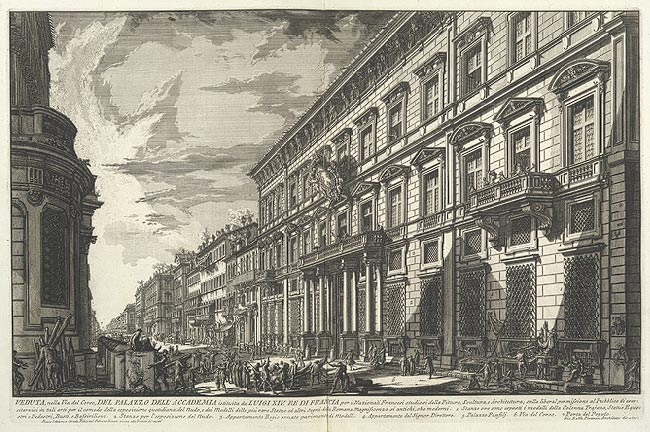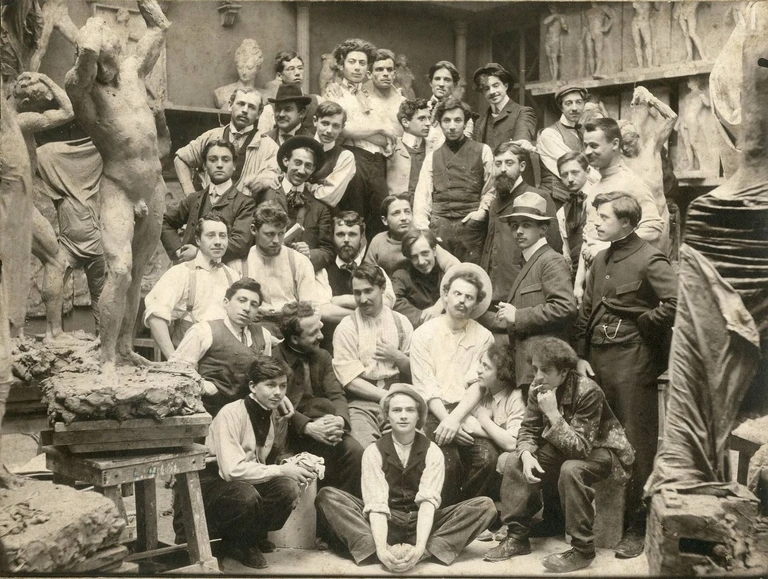Awards for Artists
David W. Galenson and Robert Jenson, "Canvases and Careers: The Rise of the Market for Modern Art in the Nineteenth Century"
| As you read the description of the mechanics
of the 19th century Paris art world, ask yourself how
operating in an environment like this would predispose artists like
Gérôme to hold to the artistic forms of the past and resist
innovations. |
Favored artists were rewarded by the state and the Academy in a number of ways. One was through state commissions. A second was state purchases, typically selected from works exhibited at the Salon. Works of art acquired in this way were generally distributed among Frances provincial museums or Paris's museum for living artists, the Luxembourg. A third means of official recognition lay in Salon prize medals, awarded as first, second, or third-class medals, and accompanied by a cash prize. . . .
The government further buttressed the Salon medal system by offering another set of medals awarded at the various art exhibitions held in conjunction with the great Expositions Universelle of 1855, 1867, 1876, 1889, and 1900. The French artists who received these special medals and higher cash prizes almost invariably had previously medaled at the Salons. With so many opportunities available . . . important French Salon artists who debuted after the first quarter of the century often earned at least three medals over their careers and sometimes more.
Successful Salon careers then positioned artists to take advantage of additional components of the award system that the Academy and the state could offer artists. The first was appointments to desirable jobs. These included teaching positions at the Ecole de.s· Beaux-Arts and the coveted position of director of the French Academy in Rome. The second was admission to the Legion of Honor, created by Napoleon. The Legion was divided into four classes of membership, beginning with Chevalier followed by the Officier rank. then Commandeur, and at the top the Grand Cross. The third type of honor for the most favored artists was election to the French Academy.
The award system offered artists a measure of financial security by building their reputations steadily over the course of their careers. While medals and knighthoods were not in themselves sufficient to guarantee the personal fortunes of artists, these honors significantly publicized their careers in manner entirely unavailable to artists outside the Salon system. Salon celebrities were given favored access to critical and public attention, and thus served to attract dealers to buy their work and to act as agents on their behalf.

The Palazzo Mancini in Rome, where winners of the Prix de Rome were supported by the French government from 3-5 years to give them a chance to see and to copy ancient Roman statues and monuments.

Students at the Ecole des Beaux Arts, 1900